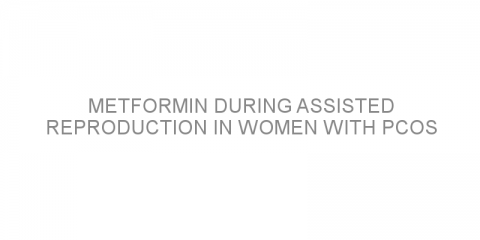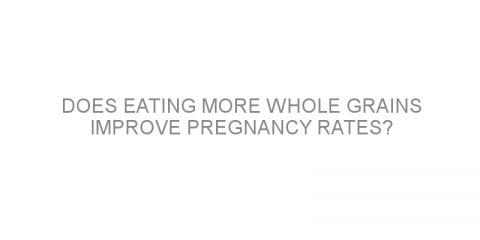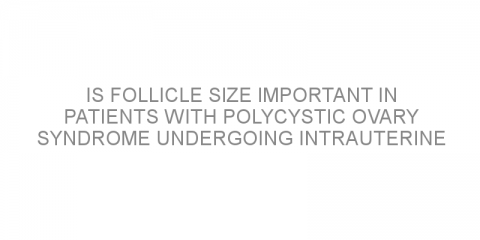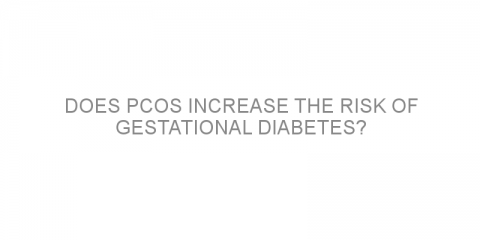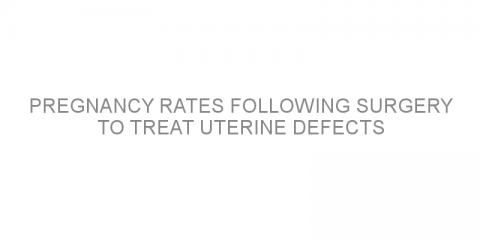In a nutshell This study explored the impact of the drug metformin (Glucophage) on women with polycystic ovary syndrome (PCOS) who were undergoing assisted reproductive techniques (treatments to get pregnant). The study concluded that there was no firm evidence that birth rates increased by using metformin. Some background PCOS is a...
Read MoreReason(s) for signing up-Having trouble getting pregnant Posts on Medivizor
Does eating more whole grains improve pregnancy rates?
In a nutshell This study explored whether whole grain intake before in vitro fertilization improved pregnancy rates. The results showed that a higher intake of whole grains before IVF resulted in higher pregnancy rates. Some background Whole grains are very high in nutrients such as vitamins and fiber. They are thought to help reduce the risk...
Read MoreIs tubal canalization an effective procedure to clear blocked fallopian tubes?
In a nutshell This study assessed whether tubal canalization (TC) was effective in treating blocked fallopian tubes. The study concluded that TC was a safe, effective, and minimally invasive way of unblocking fallopian tubes in certain cases. Some background Blocked fallopian tubes are common in women of reproductive age and can result in...
Read MoreIs follicle size important in patients with polycystic ovary syndrome undergoing intrauterine insemination?
In a nutshell This study explored the impact of follicle size and endometrial thickness on pregnancy rates in women with polycystic ovarian syndrome (PCOS) undergoing ovarian stimulation and intrauterine insemination (a fertility treatment). The study concluded that pregnancy rates were not affected by follicle size or endometrial thickness. Some...
Read MoreLow vitamin D levels associated with infertility
In a nutshell This study looked at vitamin D levels and pregnancy rates in patients undergoing in vitro fertilization (IVF). The study found that pregnancy rates were signficantly higher in the patients who had higher vitamin D levels. Some background Vitamin D is important for good health. The main source of vitamin D is from the action of...
Read MoreThe effects of berberine on women with polycystic ovary syndrome
In a nutshell This study assessed the effects of berberine on the menstrual cycle, ovulation rates, hormone levels and metabolism of Chinese women with polycystic ovary syndrome (PCOS). This study found that berberine may improve the menstrual pattern and ovulation rates in these patients. Some background PCOS is a syndrome in which...
Read MoreDoes PCOS increase the risk of gestational diabetes?
In a nutshell This study explored the relationship between gestational diabetes (GD) and polycystic ovarian syndrome (PCOS). This study concluded that there was a two-fold increase in the rate of GD in women who had PCOS compared to women without PCOS. Some background PCOS is a common disorder, affecting between 5% and 14% of women during their...
Read MoreThe effect of high intensity exercise on polycystic ovarian syndrome
In a nutshell This study examined whether high intensity exercise could improve the cardiometabolic profile in women with polycystic ovary syndrome. Some background Polycystic ovarian syndrome (PCOS) is associated with many hormonal and metabolic (how the body breaks down and uses energy from food) factors. In addition to having fertility problems...
Read MoreStimulating ovulation in unexplained infertility
In a nutshell This study examined whether letrozole can reduce the rate of multiple births without reducing the rate of pregnancy success in unexplained infertility. Some background Infertile women may undergo ovarian stimulation to stimulate the development of eggs in the ovaries. The drugs clomiphene...
Read MoreCan multiple births be reduced by changing assisted reproductive technology practices?
In a nutshell This study examined the multiple births that can occur as a result of assisted reproduction technology. Some background Assisted reproductive technology (ART) is used in infertility. In ART, the eggs and sperm are handled for the purpose of establishing a pregnancy. It includes procedures such as in vitro...
Read MorePregnancy rates following surgery to treat uterine defects
In a nutshell This study examined whether live birth rates are affected by uterine septum size, following surgical removal of the septum. Some background Infertility, or the inability to conceive, affects 5-15% of couples worldwide. The assessment of infertility includes examination of the female fallopian tubes (tubes that deliver the fertilized...
Read MoreNew male infertility guidelines – are some men missing out?
In a nutshell This study assessed new guidelines for diagnosing infertility, and whether this may exclude men who could benefit from vein removal surgery (varicocelectomy). Some background Enlargement of the veins within the testes is a common cause of infertility in men. It is easily treated and surgical removal of the vein has been...
Read More
